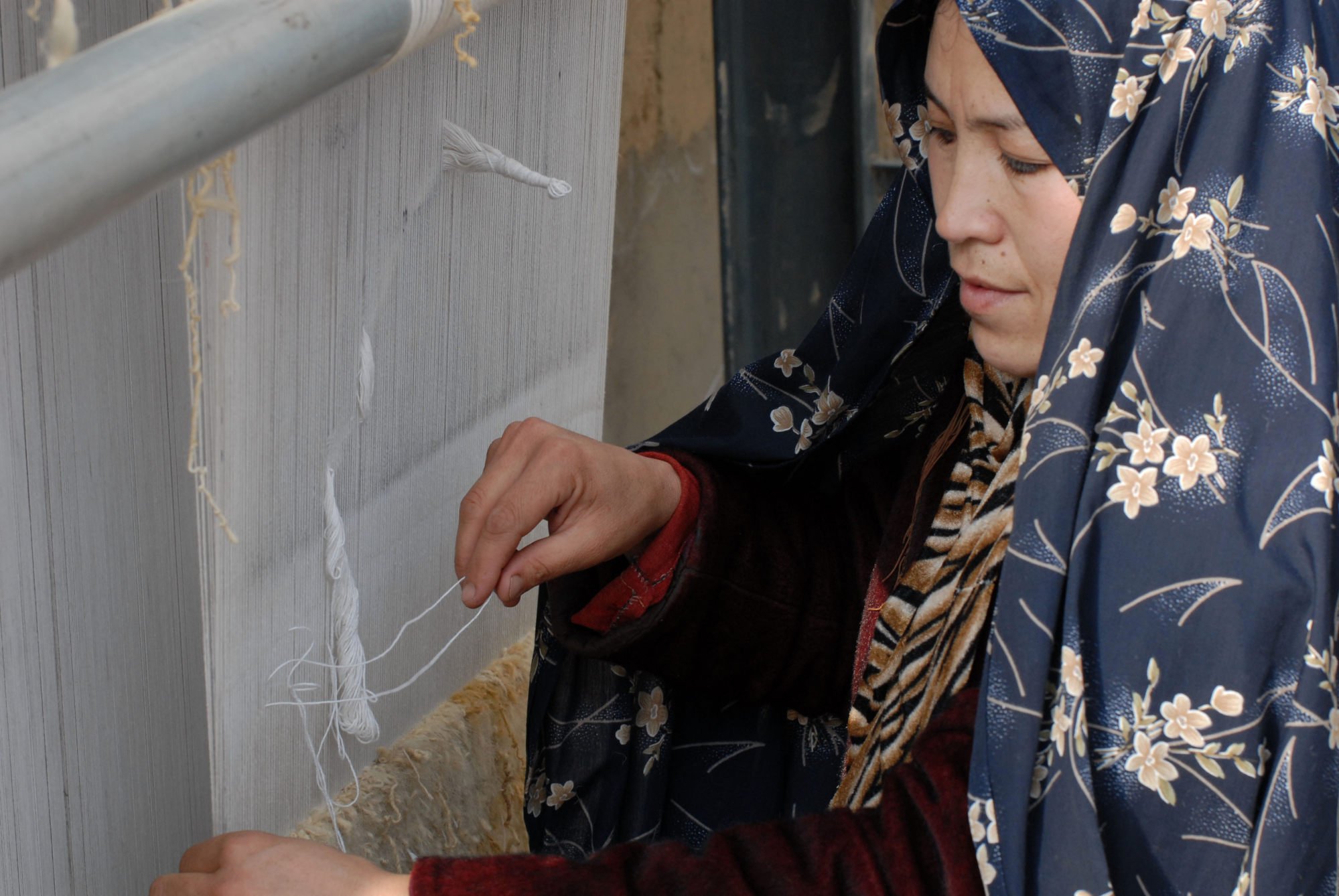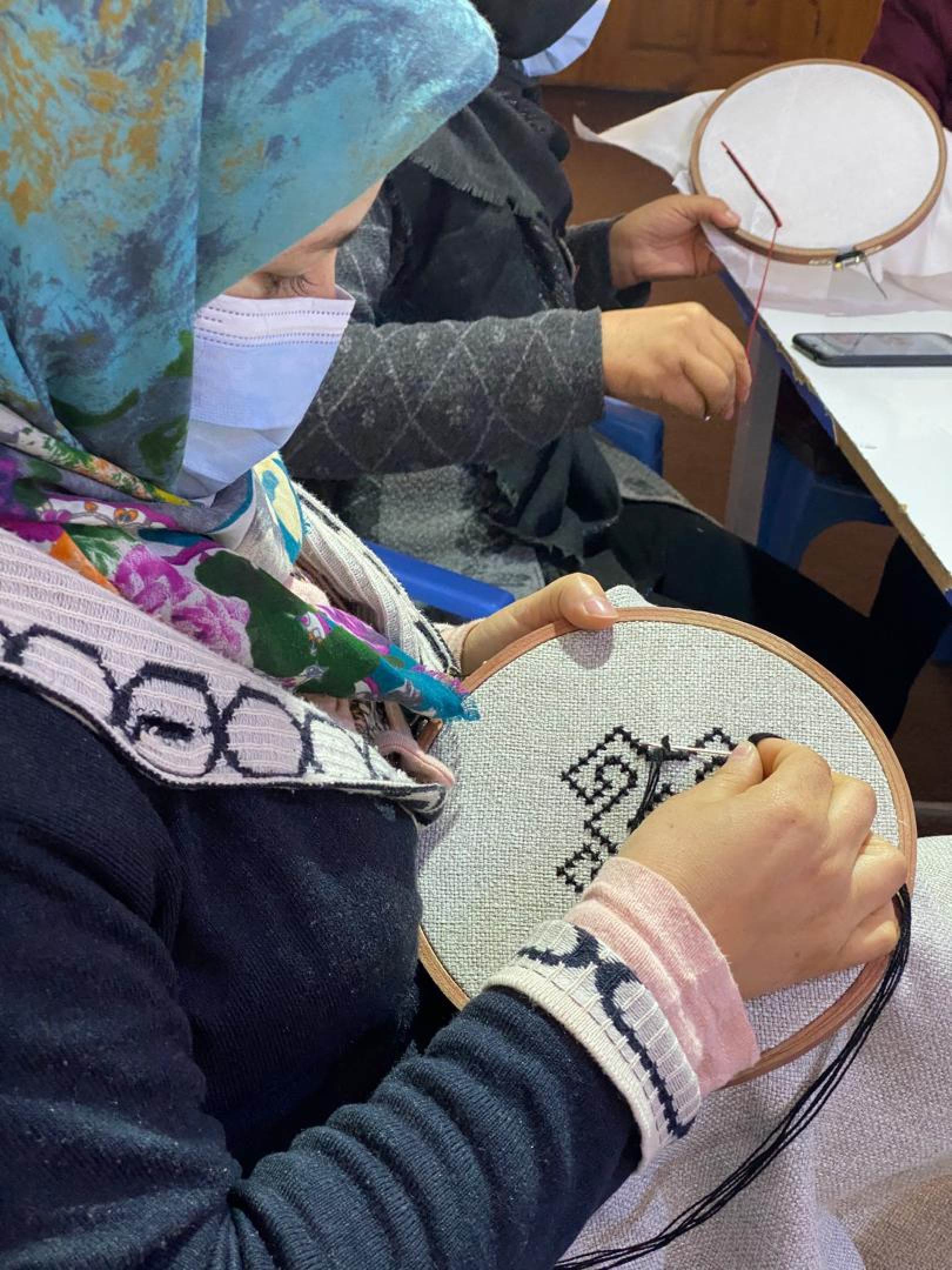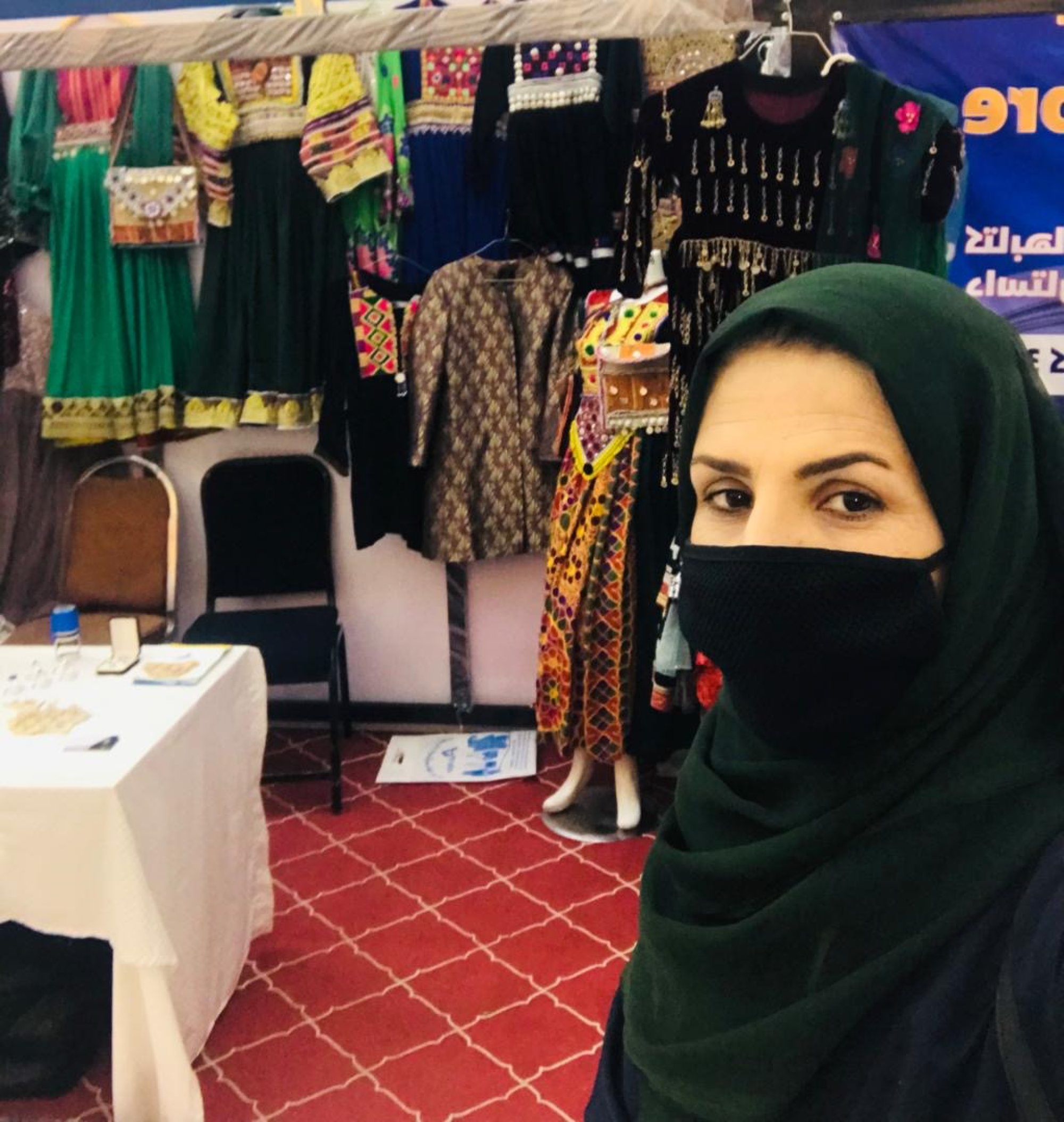
In Afghanistan, women become breadwinners selling handmade products to make ends meet
- Afghan women have been relying on their handicraft skills to feed their families, making products like dresses, carved furniture and jewellery to sell
- NGOs and retailers help ensure Afghan women have incomes by providing handicraft workshops and selling handmade items despite Taliban restrictions
Sharifa Hussaini, 33, inserts a needle through silk fabric and pulls the thread taut to stitch floral motifs bursting with colours from red to orange and yellow. Her latest work is a traditional Afghan dress.
“I thank my mother and grandmother that they taught me this craft while I was a child. Without this skill, I would have failed to feed my family,” Hussaini, who earns around 6,000 Afghan afghanis (US$82) a month, told This Week In Asia.

Ever since the Taliban took power in Afghanistan in 2021, women have not only been barred from studying in secondary schools, colleges and universities, but also refused jobs in professions ranging from teachers and lawyers to bankers and photographers.
In the fourth quarter of 2022, female employment was 25 per cent lower compared with the second quarter of 2021, before the Taliban takeover.
Overall, half a million people have been rendered jobless and around 43 per cent of the population is living on less than one meal a day.
In such trying times, at least 4,000 women artisans like Hussaini, hailing from various Afghan provinces ranging from Kabul to Badghis and Bamiyan, have been using their handicraft skills to feed their families.
The artisans make a range of products to sell at both local and international markets. Oil and pencil paintings, carved wooden furniture, traditional embroidered dresses, jewellery and accessories are among the items made for sale.

In Afghanistan, the handicraft industry contributes 3 per cent of the country’s gross domestic product. Women make up nearly 90 per cent of 1.2 million to 1.5 million Afghans employed in the weaving and wool-spinning sub-sectors of the handmade carpet industry.
Since 2021, the non-profit Women’s Activities and Social Services Association (WASSA), which promotes women’s equal participation in socio-economic sectors, has trained more than 800 women artisans across various provinces through free workshops – lasting six to eight months – on trades including carpet weaving, embroidery, tailoring, wood carving and claypot making.
With the Taliban making it mandatory for women to have a male guardian if they wish to travel further than 72km, many now work from home.
Herat-based calligraphic artist Razia Karimi, 32, who trained at WASSA’s workshops last year, also earns around 6,000 afghanis a month selling her artwork. But Karimi, whose husband has been unemployed since losing his job as a lawyer in August 2021, aims to sell her products to international tourists for better earnings.
Since the Taliban takeover, official data shows nearly 5,000 international tourists have visited Afghanistan’s ancient sites so far.
“Our markets will be back on their feet if the footfall of international tourists increases,” Karimi said. “We are not asking for charity but only a good price for our unique artwork.”

‘A space for Afghans’
London-based retailer ISHKAR is doing its bit to spread the word about Afghan handmade products.
Colourful kilims, carpets, jewellery and glassware made by 250 artisans – mostly women – are just some of the items ISHKAR is selling at its physical store and on its website.
ISHKAR co-founder Edmund Le Brun said many Afghanistan-made kilims and carpets on the international market previously had Pakistani labels because the final stages of washing and cutting took place there.
But ISHKAR ensures that the cutting and washing stages are completed in Afghanistan so that the local artisans can retain “more value for their work”.
More young women are also now learning skills such as carpet weaving and tailoring to make ends meet, after a 2022 Taliban ban meant girls were forced to leave their university education halfway.

In December 2021, Zainab Mohammadi, creator of the Abrisham Style fashion brand in Afghanistan, engaged 80 women artisans to hold workshops in Kabul and Parwan on how to weave Gande Afghani – the traditional long dress made of velvet, artificial coins and beads.
She started to hold more workshops, attracting 120 more women in Badakhshan, Takhar and Bamiyan provinces, after being forced to stop studying for her undergraduate medicine course at a private university in Kabul.
So far, 600 women have received such training, and they impart their skills to other women in their neighbourhoods.
Mohammadi, who distributed aid to internally displaced people after the Taliban takeover, lends her brand name to these handmade dresses before selling them to international customers on e-commerce platform Aseel. Each artisan is paid around US$300 to US$600 per piece of artwork by Mohammadi, depending on the richness of the embroidery.
“My aim is to ensure that these women get a regular flow of cash because there is no other way that their families can survive,” said Mohammadi, now 36.
Aseel founder Nasrat Khalid aims to create 10,000 jobs in Afghanistan, especially for women, by enabling direct access to the global market via the digital economy. Since 2021, Aseel has sold 10,000 handmade Afghan products worth US$50,000 and provided around 1,000 jobs for women artisans of varying ethnic communities including Pashtos, Tajiks, Uzbeks and Hazaras.
“We want to create a space for all Afghans to ensure that they stay united against all odds,” Khalid said.

But the odds are just too daunting for many.
When Zarghoona Ibrahami started her tailoring shop in Kabul two years ago, the Taliban told the 42-year-old that she was not allowed to display photographs of women in the shop or stitch Western dresses. All women employees – four full-time tailors and 30 trainees – were also asked to be covered from head to toe.
Ibrahami, who earns roughly 35,000 afghanis a month, has followed all instructions because she wants to “employ more women” in her tailoring business, since women are now the sole breadwinners for most families.
London retailer ISHKAR wants to continue sourcing handmade products from Afghan artisans, despite shipping costs tripling following the exodus of private logistics companies and closure of freight routes after August 2021.
This has pushed up prices of the products by up to 30 per cent, which sometimes “discourages” customers from making a purchase, but Le Brun says the company does not want to deprive the Afghan artisans of work and economic opportunities.
“Plus, the loss of work would have caused psychological distress to the artisans, especially women, who barely had any opportunities to engage in meaningful work,” Le Brun told This Week In Asia.

Amanulla Rustamzada, 28, is originally from Bamiyan in Afghanistan but now lives in Turkey. Buying handmade Afghan products online is one way of helping the Afghan diaspora connect with their homeland, and serves as an opportunity to encourage the women artisans back home.
“It is important to support these women so that they can sustain their families and keep the art alive,” said Rustamzada, who bought US$330 worth of traditional Afghan dresses from Aseel last year for Eid.
In Afghanistan, however, the handcrafted items face tough competition from imported Chinese products, which are machine-made and cheaper but of lower quality.
“In the worst circumstances, when we are taking the courage to preserve our cultural heritage, we should be able to do it,” Sultani said, adding that WASSA intended to list more handmade items on international markets to boost global awareness.
